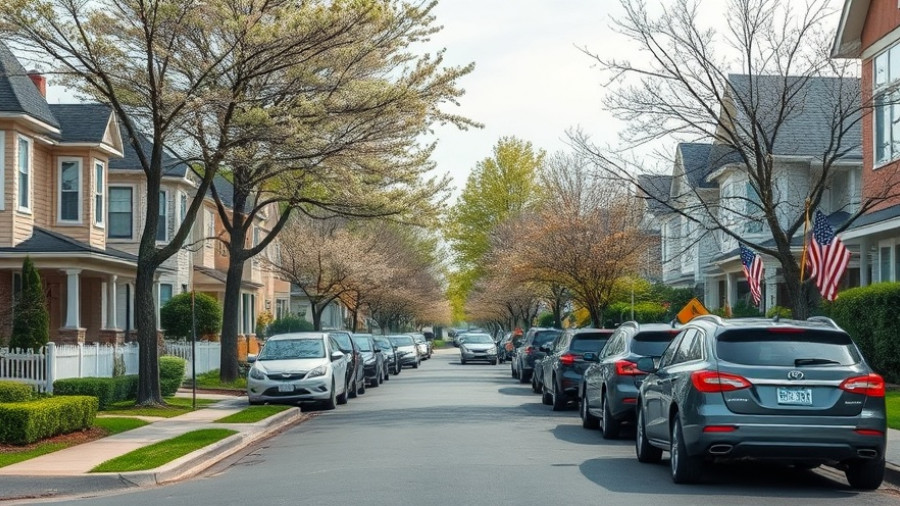
London's Housing Market: A Shifting Landscape
The London housing market is undergoing a noticeable transformation as recent trends reveal significant decreases in property prices across various boroughs. The average cost of purchasing a home in London dropped by almost £50,000 in some areas, a stark contrast to the ongoing property price increases in other regions of the UK.
Understanding the Numbers: Price Drops by Borough
According to the Office for National Statistics, the typical property in London now costs around £562,000, reflecting a modest annual growth of just 0.7%. While originally competitive, London now has the lowest growth rate compared to other regions, with areas like the North East seeing dramatic rises of up to 7.9%. Within London, boroughs such as Wandsworth and Hammersmith and Fulham have experienced some of the most significant declines, with prices down 6.4% and 5.3%, respectively.
Where Are Prices Declining the Most?
Interestingly, 13 boroughs in London have reported falling property prices within the last year. For instance, Westminster's decline equates to a staggering £49,000 loss. Sharp decreases also affect iconic areas, where high valuation often masks the recent downturn. Yet, the price drops do not universally reflect a bleak scenario—Bromley saw an 8.4% increase, showcasing the potential for growth in certain pockets of the city.
Positive Trends: Growing Areas to Watch
While some London homeowners brace for lower valuations, several areas remain resilient. In Barking and Dagenham, average prices surged by 7.7%, while Camden's properties climbed by 5.8%. These increases suggest localized markets may still offer promising opportunities for both new buyers and investors. Prospective homeowners should keep a keen eye on these upward trends that buck the overall city-wide declines.
The Bigger Picture: Impact on Homeowners and Investors
The broader implications of fluctuating property prices are significant for young homeowners in London. Those aiming for home improvement and sustainable living may find their budgets more challenging due to diminishing valuations in notorious boroughs. However, for those keen on investing strategically, understanding marketplace nuances can provide the edge needed to leverage the shifting tides to their benefit.
Communities Matter: Local Spotlights in Action
Local initiatives are crucial for reinvigorating neighborhoods facing price drops. Community projects that promote sustainable and eco-friendly living can potentially enhance property values. Homeowners in these areas can participate in local councils or grassroots initiatives to improve community spaces, which may lead to a renewed interest in otherwise struggling neighborhoods.
Practical Insights: Home Improvement Decisions
For many homeowners contemplating renovations or upgrades, current market conditions may influence decision-making. Investing in energy-efficient appliances, smart home technologies, and eco-friendly improvements not only enhances living quality but may also increase market appeal. It’s crucial for homeowners to focus on strategic upgrades that will hold value despite overall market fluctuations.
The Bottom Line: Preparing for Future Trends
As London’s real estate market continues to evolve, keeping informed and adapting strategies is more important than ever. Homeowners and prospective buyers should remain vigilant of local trends, explore areas of growth, and engage with community efforts aimed at revival and sustainability. By doing so, they can foster resilience against ongoing fluctuations and ultimately enhance their living experience for years to come.
Stay Involved! As the market shifts, stay informed and get involved in local initiatives that promote property stability. Understanding these trends can empower your decisions as a homeowner. Join community discussions, familiarize yourself with emerging hotspots, and read up on current homeowner tips to navigate this changing landscape effectively.
 Add Row
Add Row  Add
Add 




Write A Comment